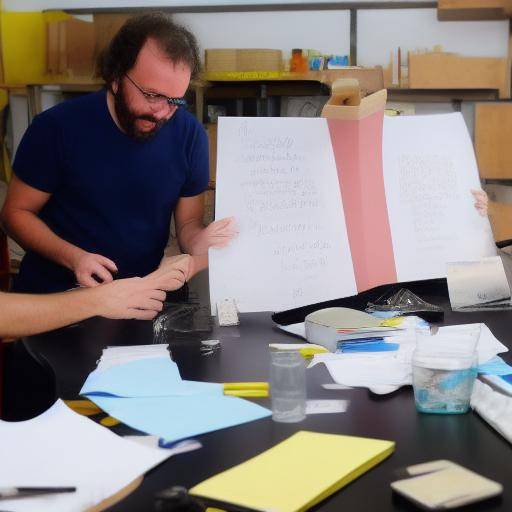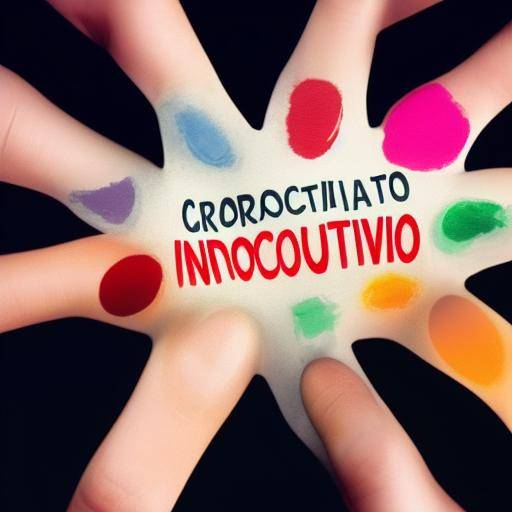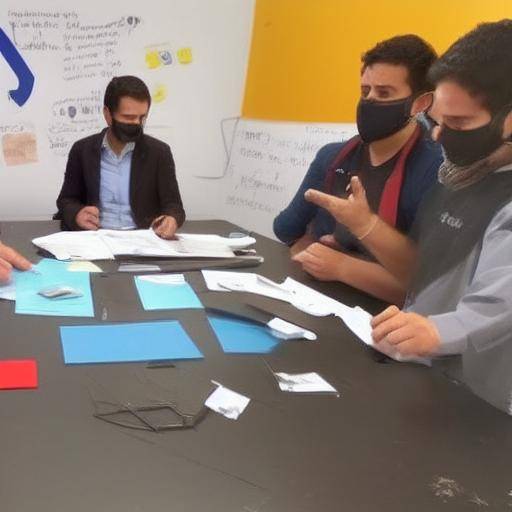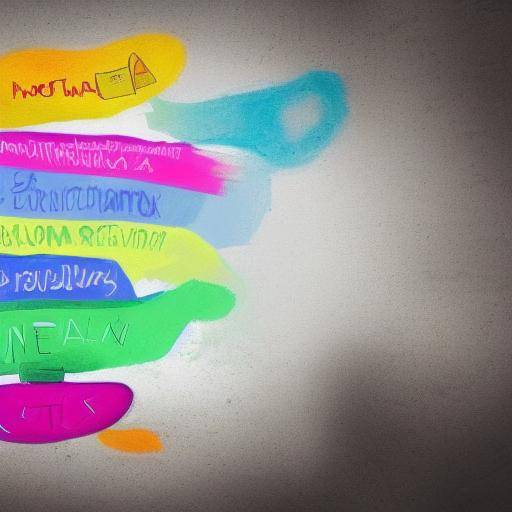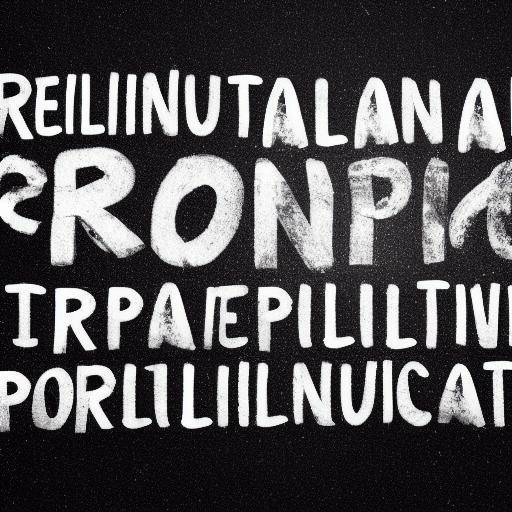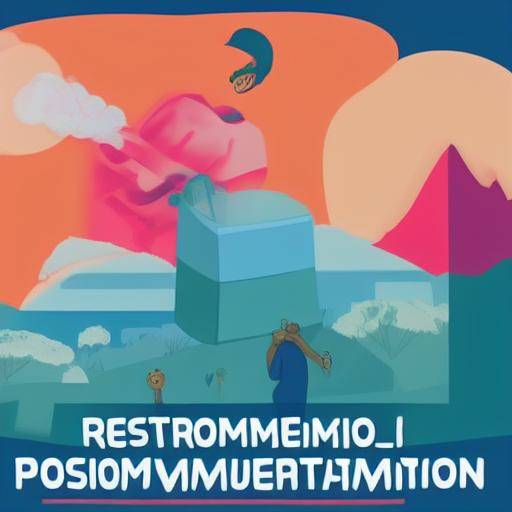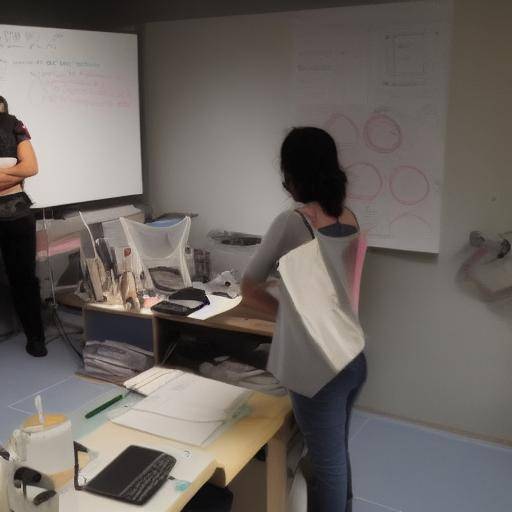
Creativity is a powerful engine to solve problems in an innovative way. In this article, we will explore the technique of SCAMPER, an effective tool to stimulate creativity and find original solutions to everyday challenges. We will discover how this technique can boost problem solving creatively in different contexts, and provide practical advice, case studies and expert opinions to enrich your understanding. Join us on this journey to unlock your creative potential!
Introduction
The ability to solve problems in an innovative way is essential in the current world. The SCAMPER technique is a proven tool that helps to stimulate creativity and problem solving systematically. In this article, we will explore in detail what the SCAMPER technique is, how it can be applied to unlock creativity and solve problems, and what benefits this methodology offers. In addition, we will examine practical examples and tips to effectively implement this technique. Prepare to discover a new and stimulating approach to solving problems through creativity.
History and Background
The SCAMPER technique has its roots in the field of creativity and problem solving. Developed by Alex Osborn, a renowned creative expert, this methodology has evolved over time to adapt to various fields, from education to business innovation. Since its inception in the 1950s, the SCAMPER technique has been widely used and studied, making it a valuable resource to boost creativity and innovation.
Origins and Evolution
The SCAMPER technique originated as a series of questions designed to stimulate the generation of creative ideas. Over time, these questions were organized into an acronym that encompasses different ways of dealing with an existing problem or idea to expand their creative potential. This systematic approach has proven to be effective in unlocking creativity and fostering innovation in various areas, from product design to organizational challenges.
Significant issues
Over the years, the SCAMPER technique has evolved to adapt to the changing needs of society and businesses. Recognition of its effectiveness in the generation of innovative ideas and problem solving has led to its integration into numerous training programmes, design processes and innovation strategies. The ability of the SCAMPER technique to stimulate creativity and troubleshooting has made it an invaluable tool for those seeking solutions out of the ordinary.
Deep analysis
The SCAMPER technique offers many benefits, but also poses challenges that need to be considered. By understanding in detail its applicability, limitations and potential, it is possible to maximize its effectiveness in different contexts. A detailed analysis of the SCAMPER technique will allow us to better understand how to maximize its ability to boost creativity and problem solving.
Detailed Analysis
The SCAMPER technique offers a number of significant benefits that make it stand out as an invaluable tool for creative troubleshooting. From the ability to stimulate the generation of innovative ideas to their flexibility to adapt to different situations, this methodology provides a wide range of advantages that promote their relevance in the current world.
Benefits of the SCAMPER technique
The SCAMPER technique acts as a catalyst for creativity by providing a structured framework to address problems and generate innovative ideas. By exploring different strategies to modify, combine, adapt and redefine existing elements, this methodology allows us to unlock new perspectives and creative solutions. Moreover, its flexibility and adaptability make it applicable in various contexts, from the resolution of organizational challenges to the generation of revolutionary concepts in the field of design.
However, the SCAMPER technique also poses challenges that need to be addressed to maximize their effectiveness. The risk of falling into routine, the lack of focus on the implementation of generated ideas and the need to create an enabling environment for creativity are aspects that require attention. In understanding both the benefits and the challenges associated with the SCAMPER technique, it is possible to use it more effectively, achieving significant results in problem solving in an innovative way.
Perspectives and Views
The SCAMPER technique has generated a wide interest and debate in the field of creativity and innovation. Several experts and professionals have shared their perspectives on the impact of this methodology on the generation of creative ideas and problem solving. Explore different views and opinions will enrich our understanding of the SCAMPER technique and allow us to appreciate its scope in a variety of contexts and sectors.
Comprehensive review
The SCAMPER technique finds applications in a wide range of situations, from the resolution of practical challenges to the generation of disruptive innovations. By examining in detail how this methodology can be implemented in different contexts, as well as best practices to maximize its effectiveness, we will be able to maximize its potential for creativity and problem solving.
Practical Applications
The SCAMPER technique has proven to be effective in many contexts, from optimizing business processes to generating innovative concepts in product development. By exploring case studies and practical examples, we can see how this methodology translates into concrete solutions and tangible results. These application cases will provide a clear view of the versatility and relevance of the SCAMPER technique in different environments.
Best Practices and Tips
To effectively implement the SCAMPER technique, it is crucial to understand the best practices and tips that maximize their impact. From the creation of an enabling environment for creativity to the effective management of the ideas-generation process, there are numerous strategies that can enhance the use of this methodology. By integrating practical advice and expert experiences, we will be in an optimal position to successfully apply the SCAMPER technique.
Comparative analysis
To compare the technique of SCAMPER with other methodologies and approaches for creativity and problem solving will allow us to appreciate its relative strengths and uniqueness. By exploring similarities, differences and possible synergies with other strategies, we can broaden our perspective on how to address challenges in an innovative way. A comparative analysis will provide valuable information on how to integrate the SCAMPER technique into a wider context of creative tools and approaches.
Practical Tips and Accessible Recommendations
When implementing the SCAMPER technique, it is essential to have practical advice and actionable recommendations that facilitate its effective implementation. From detailed steps for each phase of the process to concrete examples that illustrate its implementation in real situations, these tips will provide clear guidance for those seeking to stimulate creativity and problem solving in an innovative way.
Tips for Successful Implementationa
- Creative environment: Establishing an environment that fosters creativity and free expression is essential for the success of the SCAMPER technique. To promote collaboration and exchange of ideas without fear of judgment or premature criticism is essential to stimulate the generation of innovative ideas.
- Process Phases: Following a structured approach along the phases of the SCAMPER process – replacing, combining, adapting, modifying, elaborating and reversing – will help address the problem from multiple perspectives, thus unlocking creative and new solutions.
- Wide participation: Involving a broad spectrum of people with different backgrounds and experiences in the process of generating ideas ensures a diversity of approaches and enriches the creative flow.
- Practical Applications: Identifying specific cases of application of the SCAMPER technique in real situations provides tangible examples that illustrate its effectiveness and relevance.
- Critical Assessment: Maintaining a critical assessment of the ideas generated and their practical feasibility is essential to ensuring that the SCAMPER process results in effective and applicable solutions.
Step-by-Step Guides and Practical Examples
Replacement phase
- Definition: Identify key components of the existing problem or idea that could be replaced by something completely different.
- Example: Instead of using traditional materials, could we replace them with recycled or sustainable materials?
Combining phase
- Definition: Explore the possibility of combining existing elements in an unexpected or innovative way.
- Example: How could we combine emerging technologies with traditional methods to generate an innovative hybrid solution?
Adaptation phase
- Definition: Consider how the characteristics or principles of an existing idea could be adapted to meet new needs or contexts.
- Example: How could we adapt a successful approach to a different field to solve a current problem?
Modification phase
- Definition: Explore how aspects of the idea or problem could be modified to improve their performance or impact.
- Example: To what extent could we modify the current process to make it more efficient or sustainable?
Development phase
- Definition: Consider how the aspects of the idea or solution could be expanded or detailed to achieve a more significant impact.
- Example: How could we develop a basic concept to make it more attractive and complete for our users?
Phase of Revertir
- Definition: Explore the possibility of investing certain aspects of the idea or problem to discover new perspectives.
- Example: What would happen if we reversed the stage order in the current process?
Industry Perspectives and Expert Reviews
The SCAMPER technique has generated an important interest in the business, educational and creative community. The opinions of experts and professionals who have applied this methodology in their work provide valuable insights on their effectiveness, challenges and potential for innovation.
Interviews and Highlights
"The SCAMPER technique has proven to be a powerful tool for our company by stimulating the generation of innovative ideas and solving business challenges. Its systematic approach has allowed us to address problems from multiple angles, which has resulted in surprising and creative solutions." - Director of Innovation, Global Company.
"In the field of education, the SCAMPER technique has been an invaluable tool to encourage our students to think creatively and find innovative solutions to problems. Its structured and adaptable approach has been successfully integrated into our teaching methodology, which has stimulated participation, collaboration and creativity among our students." - Professor of Higher Education.
Future Trends and Predictions
The applicability of the SCAMPER technique is not limited to a specific sector, but extends to various areas, from business innovation to the resolution of social challenges. As the landscape of creativity and problem solving evolves, SCAMPER's technique is expected to continue to play a crucial role in generating innovative ideas and seeking creative and effective solutions. The adaptation of this methodology to digital environments, the integration of artificial intelligence into its application and its link with collaborative approaches represent some of the emerging trends that could further transform its impact into the future.
Conclusions and FAQs
Conclusions
In short, the SCAMPER technique represents a powerful tool to stimulate creativity and problem solving in an innovative way. Its benefits, challenges and practical applications make it an invaluable resource in many contexts, from the business world to education. By understanding in depth how to use this methodology effectively, it is possible to unlock significant creative potential and find original solutions to everyday challenges.
Frequently asked questions
1. What does acronym SCAMPER mean?
The acronym SCAMPER refers to the following key words used to stimulate creativity and troubleshooting: Replace, Combine, Adapt, Modify, Develop, and Revert.
2. In what contexts is the SCAMPER technique applicable?
The SCAMPER technique is applicable in a wide range of contexts, ranging from business innovation and product design to solving educational challenges.
3. What is the main benefit of using the SCAMPER technique?
The main benefit of the SCAMPER technique is its ability to stimulate the generation of innovative ideas and problem solving from multiple perspectives, leading to creative and effective solutions.
4. Are there challenges associated with the use of the SCAMPER technique?
Yes, some challenges include falling into routine, lack of focus on the implementation of generated ideas and the need to create an enabling environment for creativity.
5. How can I effectively implement the SCAMPER technique?
To effectively implement the SCAMPER technique, it is crucial to create an enabling environment for creativity, follow a structured approach throughout the phases of the SCAMPER process and critically evaluate the ideas generated.
6. What is the future of the SCAMPER technique?
The SCAMPER technique is expected to continue to play a crucial role in generating innovative ideas and seeking creative and effective solutions, with emerging trends such as their adaptation to digital environments and their integration with collaborative approaches.
Conclusion The SCAMPER technique is a valuable tool that promotes creativity and problem solving in a wide range of contexts, from business to education. By understanding its structured approach and practical applications in detail, it is possible to unlock significant creative potential and find original solutions to everyday challenges. We hope that this article has expanded its understanding of the SCAMPER technique and inspired it to effectively apply it to your personal and professional life.











